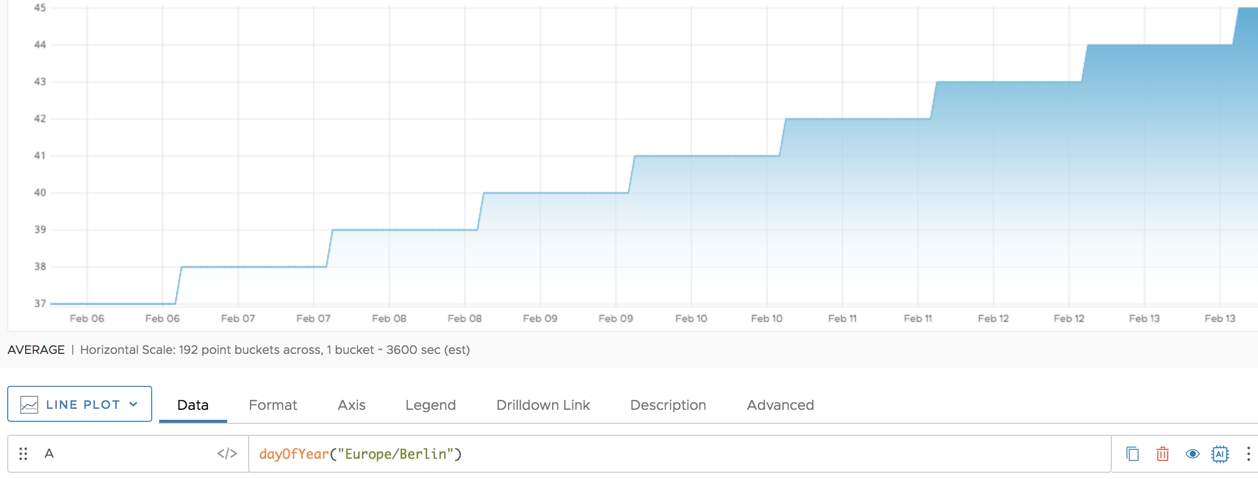Summary
dayOfYear(<timeZone> [,<tsExpression])
Returns the day of the year in the specified time zone.
Parameters
| Parameter | Description |
|---|---|
| timeZone |
String identifier or alias for a time zone, such as "US/Pacific". Names are case sensitive and must be enclosed in quotes. For a list of valid time zone identifiers and their aliases, see http://joda-time.sourceforge.net/timezones.html.
|
| tsExpression | Optional expression to which you want to apply this function. |
Description
The dayOfYear() standard time function returns the day of the year in the specified time zone. A day is represented as a whole number from 1 through 366, as defined by the Gregorian calendar. 366 is returned only during a leap year.
The returned values are plotted against the times shown on the x-axis. The returned series is generally a straight line, unless you are looking at a chart that includes times from multiple days.
dayOfYear() automatically adjusts its return values for daylight savings time.
dayOfYear() is particularly useful when you want to define an alert that fires only on a specific day or range of days within a year, such as a range that starts in the middle of a month and includes multiple weeks or months.
For example, you could use an expression such as between(dayOfYear("America/Chicago"),304,359) in an alert condition to ensure that the alert fires only between Halloween and Christmas in a non-leap year in Central Standard Time.
dayOfYear() does not automatically accommodate leap years. You can use the lead() function in an expression such as the following to return 1 on the last day of the year for a given time zone, regardless of whether the year is a leap year: lead(1d, dayOfYear(...)=1).
Examples
Example 1: Showing Days of the Year
This chart shows live data for 8 days. dayOfYear("Europe/Berlin") returns 37 through 45 when starting on February 5. The legend shows that 38 is returned for February 06 2020.

Example 2: Defining an Alert that Fires on Particular Days
Here we include (dayOfYear("America/Los_Angeles") = 15) to create an alert that fires when the CPU load average rises above 2.5 on the 15th day of the year (Jan 15).
